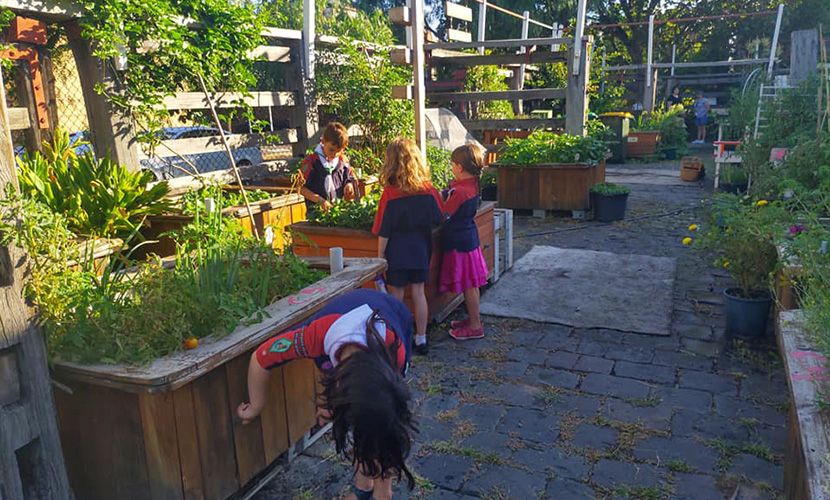A community that plants together, grows together
Growing healthy and sustainable organic food is not the only mission of the Kensington Stockyard Food Garden, but rather it's the Garden's way of encouraging the community of Kensington to grow in unity together.
Located at the corner of Bluestone Serong streets, the Food Garden was founded when local resident and current garden president Nina Ceddia and a group of supporters saw potential for an empty stockyard no longer in use.
Going from “strength to strength” since 2018, chairperson of the Kensington Stockyard Food Gardens Nan Austin believes the garden is representative of the good that can happen when a community comes together and gets involved.
“The stockyards is an historic precinct and it has bluestone pavings, which means you can’t put anything on the ground, so they came up with the idea of putting in some above ground self-wicking garden beds to grow vegetables for the community,” Ms Austin said.
“They started with about 30 garden beds and we now have more than 90 garden beds, which means we have almost 100 square metres of growing space.”
While there are a number of community gardens in and around the area, Kensington Stockyard Food Garden prides itself on what sets them apart.
Solely gardened by a committee and not the government, members are the ones responsible for preparing the soil, planting the seeds and doing the watering.
It is this structure that Ms Austin said made the garden “a community garden in the true sense” and it is why they eagerly got involved in the community where they could.
Supportive of the zero-waste lifestyle, Kensington Stockyard Food Garden aided in showcasing events associated with the Sustainable Living Festival that took place last month.
Through composting workshops and mushroom growing workshops, the community garden has created an ongoing strong partnership with the festival and dedicated a section of the garden solely to a mushroom growing space.
But it is the impact of the garden on the children in the area that Ms Austin takes pleasure in witnessing the most.
“To be able to come into the garden in the evening and see families coming in to pick something fresh for dinner is a lovely thing to see. For urban children to get to see something growing in the ground is very important,” she said.
Many urban children also regularly visit the garden with the local scouts group and are taught everything from watering the garden to composting and planting seeds and seedlings.
While the garden is proudly the responsibility of the committee and its Kensington members, Ms Austin said creating a space for all has not come without its difficulties.
Trapped between wanting to make the area more user-friendly and maintaining the historic stockyards, the garden committee is navigating ways to really stretch their reach in the community.
“We would like more community engagement, but the council won’t approve any toilet facilities, so it makes it very difficult to have school groups or groups of older people coming to the garden as we just don’t have the bathroom facilities they would need,” Ms Austin said.
“The bluestone paving has also been there since the 1800s and is very uneven which has created some barriers to the wider community, as it isn’t a very disability-friendly environment.”
Deeming the concerns as “works in progress”, the Kensington Stockyard Food Garden is always leaning on what they can control to go above and beyond in making the garden’s produce for all.
From dedicating a specific section of the garden for indigenous plants to promote indigenous food and culture, to sharing produce with the Kensington community pantry, the garden is signifying their importance.
“Attached to the Kensington Neighbourhood House is a pantry and once a month they take all the processed products out of the pantry and fill it with green products. We usually average around 10 kilograms a month for the pantry,” Ms Austin said.
As an avid gardener at the community garden herself, Ms Austin understands the importance of members doing their part, not only for their health and wellbeing but also for the surrounding community.
“It takes more than a family to raise a child and it certainly takes more than a handful of people to run an effective community garden,” she said.
Currently in the middle of brainstorming community events for April, the community garden is working out details for a plant swap and a fundraiser for Mother’s Day, both of which will be detailed on their Facebook page •

The Movement Refinery: 20 years and still going strong








 Download the Latest Edition
Download the Latest Edition